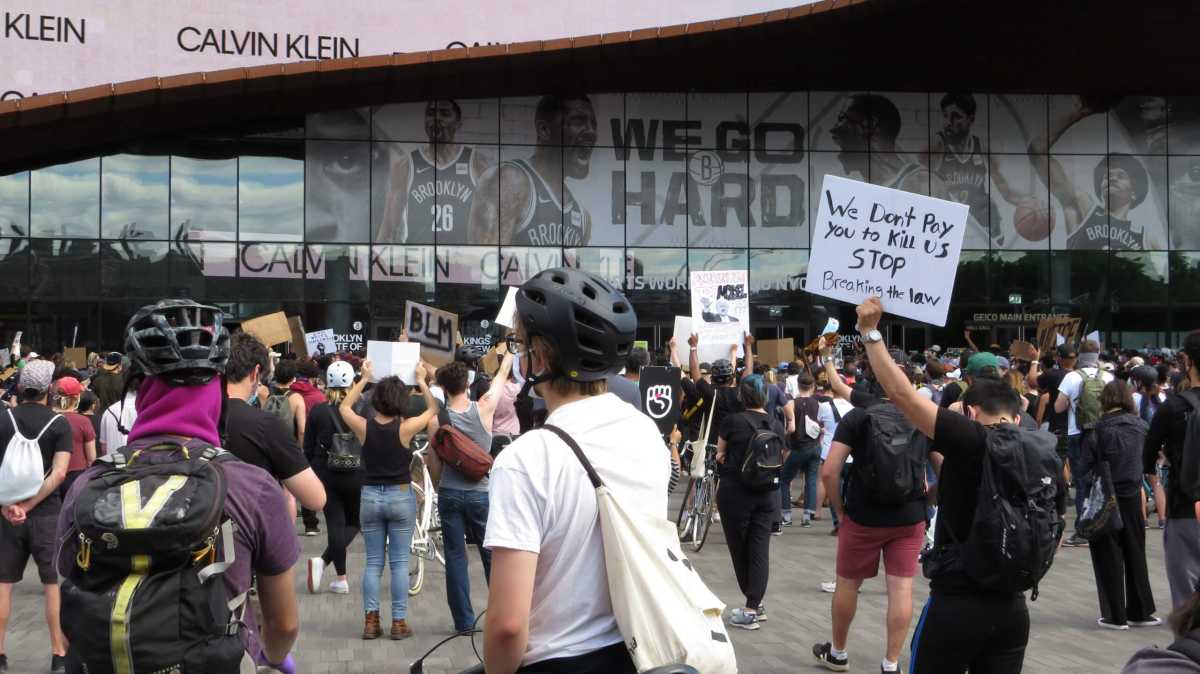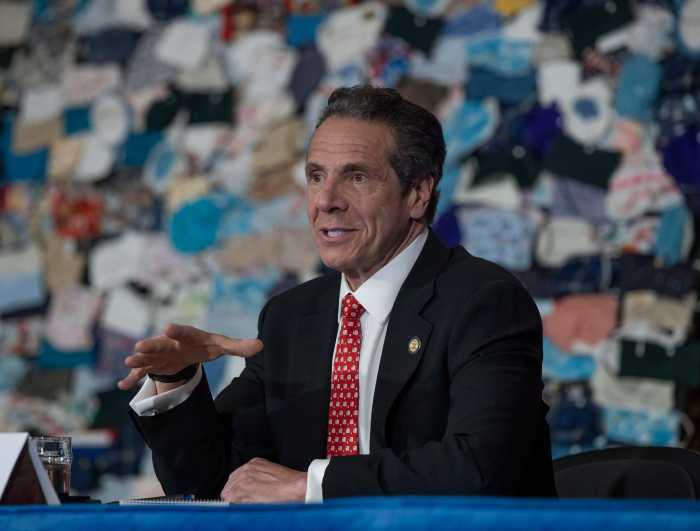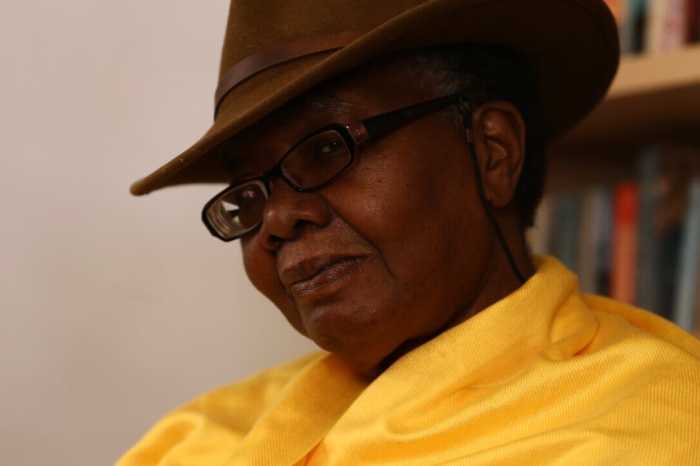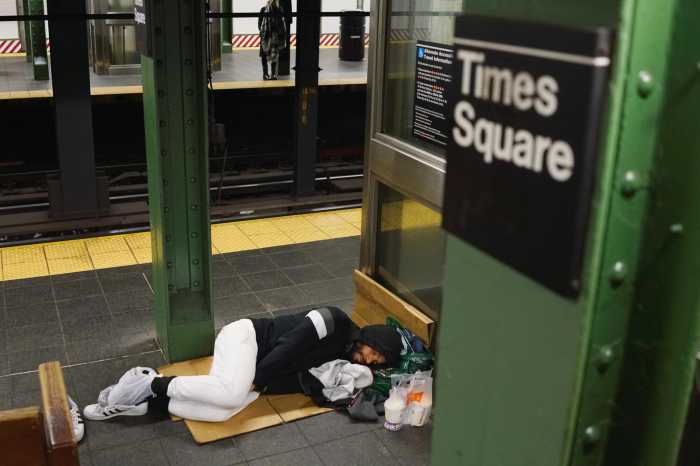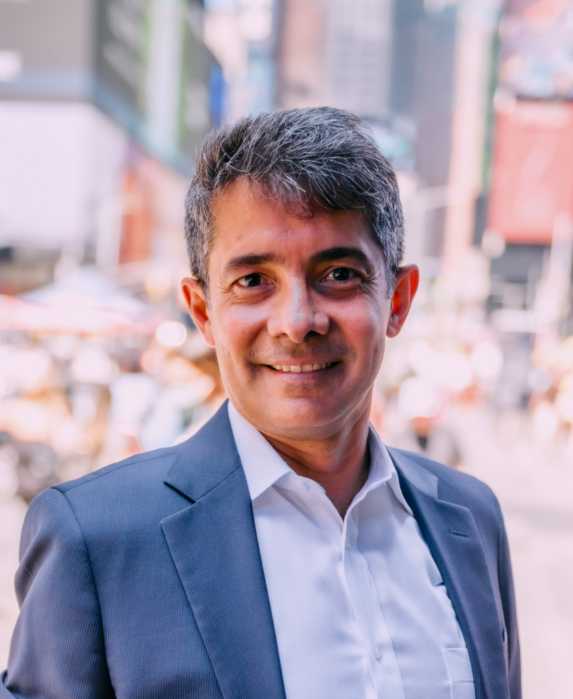As Mayor Bill de Blasio has navigated the city’s response to COVID-19, he has expressed different positions on whether or not protests are allowed in the city and has gone so far as to tell protestors how they should express themselves when they protest.
“He lacks credibility when he speaks,” said Norman Siegel, a civil rights attorney who has spent decades defending free speech and other rights guaranteed by the First Amendment of the US Constitution. “The inconsistency just leads to distrust and mistrust, and that is what’s happening now.”
When members of the Reclaim Pride Coalition held a press conference in the East Village on May 3 to protest the Mount Sinai Health System inviting Samaritan’s Purse, a right-wing evangelical group, to open its medical tents in Central Park, police first used a recorded message to declare the event “unlawful” and threaten participants with arrest. The protestors were wearing masks and staying six feet apart. Some participants left the event, but the press conference proceeded with just one organizer and one participant being given summonses.
The mayor called in-person protests “idiotic” on May 4 and suggested that people should “Do it online” or limit their protest to social media outlets, such as Twitter or Facebook.
On April 14, the Coalition had protested in Central Park near the Samaritan’s Purse tents without any comment from the police. Police arrested Reverend Billy Talen from the Church of Stop Shopping when he tried to deliver a Rainbow Flag to the field hospital on April 6.
Public Advocate Jumaane Williams has held one public press conference, and City Councilmember Ydanis Rodriguez has held at least two. They proceeded without any interference or threats from police. Other groups have held protests in the city without police objecting.
When a group opposing the shelter-in-place orders issued by the city and state held protests in City Hall Park on May 8, Linda Bouferguen, one of the roughly eight people participating, was arrested. Bouferguen was arrested again on May 9, along with seven other people, when they protested the orders in City Hall Park. The New York Civil Liberties Union is representing her in a lawsuit brought against the city and state over the protest ban.
“For a while, they were enforcing this no protest thing very selectively,” said Bill Dobbs, an attorney and civil rights advocate.
For Jay W. Walker, a co-founder of the Coalition, the city’s actions have more to do with who is being criticized — the mayor and governor were targeted in the Coalition protests — than who is doing the criticizing.
“It was more about what we were saying than the way we were saying it,” Walker said. “We can only surmise based on what we observed.”
When George Floyd was killed by Minneapolis police on May 25, the mayor’s position made an abrupt shift as protests with thousands of participants took place in New York City. The mayor was entirely sympathetic to that cause and expressed the view that police should make it possible for those protestors to peacefully express themselves. Yet the mayor has also suggested that protestors should not engage with police during protests, but aim their comments at elected officials — even though police conduct is a central element in the Floyd protests.
Dermot Shea, the city’s police commissioner, echoed that view in press conferences with the mayor. Both differentiated between non-violent protestors and what they said are outside agitators who are hijacking the protests with violent actions and looting.
In some respects, the mayor and Shea are being practical. Even if the police could arrest thousands of protestors, and they probably cannot, doing so would create the condition of many people being held together in an enclosed space and the city would want to avoid that to prevent the further spread of COVID-19.
But on June 1, the mayor acknowledged “the outpouring of such pain and frustration — years and years, decades, generations of pain and frustration outpouring,” but added that people should stop protesting.
“I would certainly urge everyone – look, you’ve made your point, it’s time to stay home,” he said during a press conference.
Then with little notice and after the mayor saying for two days that a curfew was unnecessary in New York City, de Blasio and Governor Andrew Cuomo imposed an 11:00 p.m. to 5:00 a.m. curfew on the city on June 1, effectively banning any protest during those hours. The argument is that most of the violence occurs at night and the curfew will prevent that. The mayor also asserted he was protecting the integrity of protesting with the curfew.
“I support and protect peaceful protest in this city,” the mayor said in a written statement that was issued less than eight hours before the curfew began. “We can’t let violence undermine the message of this moment. It is too important and the message must be heard. Tonight, to protect against violence and property damage, the Governor and I have decided to implement a citywide curfew.”
Some protests continued after the curfew on June 1 and into June 2, and the city has now been slapped with an 8 p.m. curfew through June 7.
When Dobbs was asked if de Blasio has been clear in his instructions on protests, he responded with a blunt “No.”
Siegel was equally blunt.
“The mayor’s statements demonstrate that he is not adhering to First Amendment principles and values or he just doesn’t understand its meanings and historical significance,” he said. “Government officials should not be telling people how to exercise their First Amendment rights… It’s not for the government to tell us how we should demonstrate or when we should demonstrate.”
To sign up for the Gay City News email newsletter, visit gaycitynews.com/newsletter.

